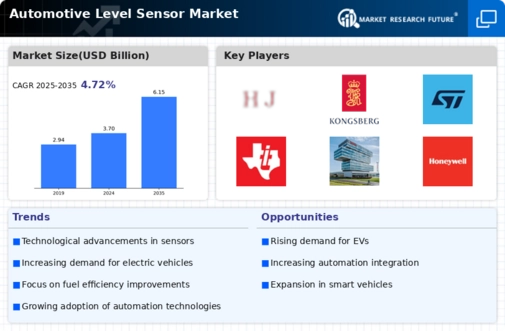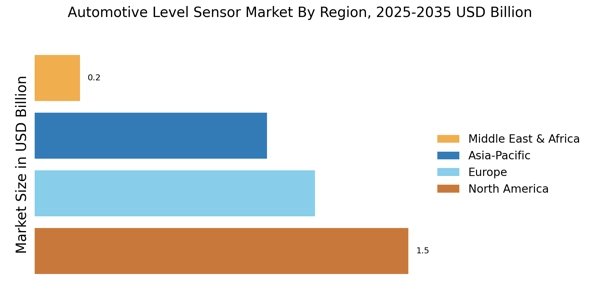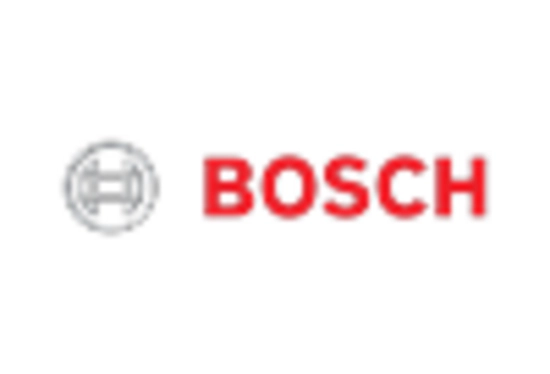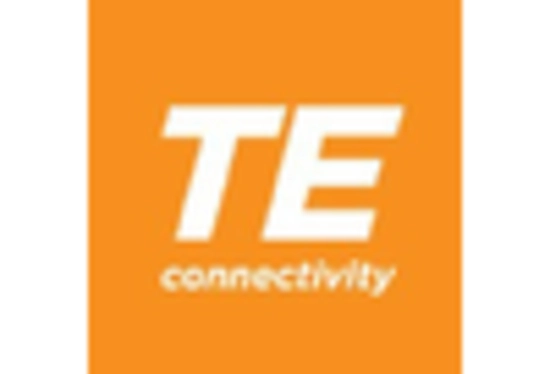Growing Electric Vehicle Adoption
The Automotive Level Sensor Market is witnessing a notable impact from the growing adoption of electric vehicles (EVs). As the automotive landscape shifts towards electrification, the need for advanced level sensors to monitor battery coolant levels and other essential fluids becomes paramount. The EV market is projected to expand rapidly, with estimates suggesting that electric vehicles could account for over 30% of total vehicle sales by 2030. This transition necessitates the development of specialized level sensors that cater to the unique requirements of electric vehicles, thus creating new opportunities within the Automotive Level Sensor Market. Manufacturers are likely to focus on innovation to meet the demands of this evolving market.
Increased Focus on Fuel Efficiency
The Automotive Level Sensor Market is significantly driven by the heightened focus on fuel efficiency among consumers and manufacturers alike. As fuel prices fluctuate and environmental concerns grow, there is a pressing need for vehicles that optimize fuel consumption. Level sensors play a crucial role in this optimization by providing accurate readings of fuel levels, which can enhance engine performance and efficiency. The market for automotive level sensors is projected to grow as manufacturers seek to develop more efficient vehicles. This trend is further supported by advancements in sensor technology that allow for more precise measurements, thereby contributing to the overall performance of the Automotive Level Sensor Market.
Regulatory Compliance and Safety Standards
The Automotive Level Sensor Market is significantly influenced by stringent regulatory compliance and safety standards imposed by various authorities. These regulations mandate the use of reliable and accurate level sensors to ensure vehicle safety and environmental protection. For instance, the implementation of regulations regarding emissions and fuel efficiency has led to an increased focus on the performance of automotive level sensors. As a result, manufacturers are compelled to invest in high-quality sensors that meet these standards, thereby driving the market forward. The Automotive Level Sensor Market is expected to see a steady increase in demand as compliance with these regulations becomes more critical for automotive manufacturers.
Rising Consumer Demand for Advanced Features
The Automotive Level Sensor Market is increasingly shaped by rising consumer demand for advanced features in vehicles. Modern consumers are seeking vehicles equipped with high-tech functionalities, including advanced level sensing systems that provide real-time data and alerts. This demand is driving manufacturers to innovate and integrate more sophisticated level sensors into their designs. As a result, the Automotive Level Sensor Market is likely to expand as companies strive to meet these consumer expectations. The integration of features such as smartphone connectivity and enhanced user interfaces in level sensors is becoming a key differentiator in the automotive market, further propelling growth in this sector.
Technological Advancements in Automotive Level Sensors
The Automotive Level Sensor Market is experiencing a surge in technological advancements, particularly with the integration of smart sensors. These sensors are increasingly equipped with IoT capabilities, enabling real-time data transmission and enhanced monitoring. As vehicles become more connected, the demand for sophisticated level sensors that can provide accurate readings of fluid levels, such as fuel and coolant, is likely to rise. This trend is supported by the automotive industry's shift towards automation and smart vehicle technologies, which are projected to grow at a compound annual growth rate of over 10% in the coming years. Consequently, the Automotive Level Sensor Market is poised for significant growth as manufacturers seek to incorporate these advanced technologies into their vehicles.


















Leave a Comment